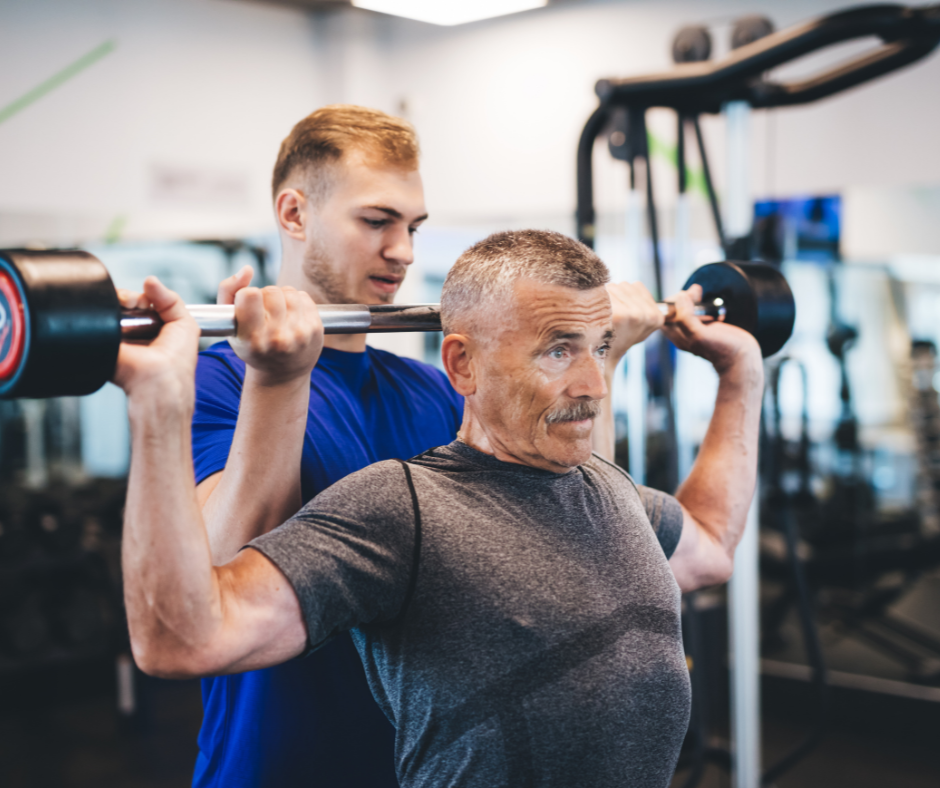As the years roll on, staying active and fit becomes an increasingly important part of maintaining your overall well-being. Exercise offers numerous benefits, from improved physical health to mental well-being, and this holds true throughout your lifetime. However, working out in your 40s, 50s, and beyond presents unique challenges that may not have been a concern in your 20s. In this comprehensive guide, we’ll explore the art of aging gracefully while keeping your fitness game strong. We’ll also delve into a significant factor in men’s fitness as they age: the impact of declining testosterone levels.
The Age Factor: Working Out in Your 40s and Beyond
When you’re in your 20s, it’s easy to take your youthful energy and physical resilience for granted. However, as you approach your 40s, 50s, and beyond, you may find that your body doesn’t respond to exercise in quite the same way. Muscle mass may decrease, joints might feel a bit stiffer, and recovery times can be longer. But the good news is that you can still achieve your fitness goals; you just need to adjust your approach. Here are some key strategies for working out effectively as you age.
1. Prioritize Mobility and Flexibility: Aging often brings a reduction in flexibility and range of motion. Incorporating stretching and mobility exercises into your fitness routine can help counteract this decline. Yoga, Pilates, and regular stretching can help maintain or even improve your flexibility, making daily activities and workouts more comfortable.
2. Embrace Strength Training: Strength training becomes increasingly important as you age, as it helps combat muscle loss (sarcopenia) and maintain bone density. Focusing on compound movements, like squats, deadlifts, and bench presses, can help you build and preserve muscle. Consider working with a personal trainer to ensure proper form and safety.
3. Cardiovascular Health: Aerobic exercise is crucial for heart health and overall endurance. While your younger self might have thrived on high-intensity activities, consider low-impact alternatives like brisk walking, cycling, or swimming to reduce strain on your joints and minimize injury risk.
4. Recovery Matters: As you age, it’s essential to allow your body ample time to recover between workouts. Pay close attention to your sleep, nutrition, and hydration. Quality sleep and a balanced diet are essential for recovery and muscle repair.
5. Consult with Professionals: It’s a good idea to consult with your healthcare provider before starting a new exercise regimen, especially if you have pre-existing health conditions. They can provide guidance on how to tailor your workouts to suit your individual needs.
Men’s Fitness and Testosterone Decline
For men, maintaining fitness as you age is also affected by a gradual decrease in testosterone levels. Testosterone is a hormone that plays a crucial role in muscle growth, bone density, and overall vitality. This natural decline can make it more challenging to maintain muscle mass and energy levels as you grow older. Here are some insights into how to address these issues:

Understanding Testosterone Decline: Testosterone levels tend to peak in a man’s late teens to early 20s and then gradually decline with age. This decline is entirely normal and is often referred to as “andropause” or “male menopause.” It can lead to symptoms such as reduced muscle mass, increased body fat, decreased energy, and even changes in mood and cognitive function.
Incorporate Strength Training: Resistance training is particularly effective for mitigating the effects of declining testosterone levels. Lifting weights, engaging in bodyweight exercises, and using resistance bands can stimulate muscle growth and help maintain a healthy body composition.
Nutrition is Key: Proper nutrition is vital for addressing the challenges posed by lower testosterone levels. A diet rich in protein, healthy fats, and a variety of vitamins and minerals can support muscle growth and overall health. Some nutrients, like vitamin D and zinc, have been linked to testosterone production, so be sure to include these in your diet.
Consider Hormone Replacement Therapy: In cases of severe testosterone deficiency and under the guidance of a healthcare professional, testosterone replacement therapy (TRT) may be an option. TRT involves the use of hormone treatments to raise testosterone levels. However, it should only be pursued after a comprehensive evaluation of your health and hormone levels.
Monitor Stress and Sleep: High stress levels and insufficient sleep can further lower testosterone levels. Prioritize stress management techniques like meditation and ensure you get enough quality sleep to promote hormonal balance and overall well-being.
In conclusion, working out as you age can be a rewarding and fulfilling journey with the right strategies in place. It’s essential to adapt your exercise routine to your changing needs, emphasizing mobility, strength training, cardiovascular health, and recovery. For men, understanding the implications of declining testosterone levels and addressing them through lifestyle changes, nutrition, and, if necessary, medical intervention, can help maintain muscle mass and overall fitness. Age may be inevitable, but maintaining a vibrant and healthy lifestyle through exercise is entirely within your control.
